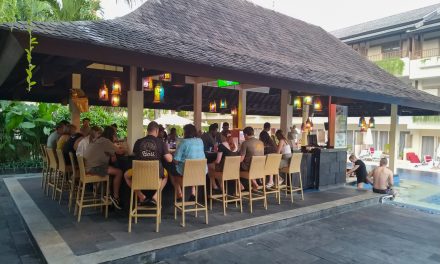It’s been nine months since Bali introduced the Tourism Tax Levy. Surprisingly, recent statistics reveal that over 60% of international visitors have been avoiding the fee. Consequently, both local leaders and tourists are feeling increasingly frustrated by the lack of visible changes.

The Call for Accountability in Tourism Funding
Tourism businesses and leaders are urging the Bali Provincial Government to be more transparent and reciprocal regarding both the Bali Tourism Tax Levy and the revenues generated from the mandatory Hotel and Restaurant Tax (PHR).
Local Leaders Express Concerns
Local tourism union head Putu Winastra didn’t hold back when addressing the issue. “It’s ironic,” he told reporters, “that we’re generating significant funds from tourism, yet we see little to no support returned to the tourism sector.”
Winastra, who heads the Bali Association of Indonesian Tours and Travel Agencies (ASITA), pointed out that ASITA members attract 40% of all visitors to Bali and are among the highest contributors to the Hotel and Restaurant Tax. Yet, he emphasized their frustration about receiving insufficient support in return.
Advocating for Change: The 5% Solution
Winastra believes that a minimum of five percent of the revenue generated from the PHR should be reinvested into the tourism sector. This reinvestment could support international promotional programs and major events like the Bali and Beyond Travel Fair (BBTF), scheduled for June 2025 at the Bali International Convention Center in Nusa Dua. “At least five percent of PHR is a reasonable request,” he added, emphasizing the countless global events that occur annually, including those held in Bali.
Future Prospects Amid Upcoming Elections
Winastra’s remarks come at a critical time as Bali prepares for a new provincial governor election on November 27th. The individual elected will not only influence the tourism sector but also the overall experience for visitors to the island.
Remember, the Bali Tourism Tax Levy originated under ex-Governor Wayan Koster, who is himself running for re-election alongside Made Muliawan Arya, commonly referred to as De Gajah.
Where is the Money Going?
Despite the significant contributions made by tourists through the Hotel and Restaurant Tax, Bari promised that revenues from the Tourism Tax Levy would be allocated to three key areas: preserving cultural heritage, protecting the environment, and improving tourism infrastructure. Yet, nearly a year later, there’s little clarity on how or when these funds will be utilized.
Earlier this year, Acting Governor Sang Made Mahendra Jaya suggested that around 70% of the initial Tourism Tax Levy funds could address the increasing waste management challenges on the island. Nonetheless, a concrete plan has yet to be disclosed.
Ensuring Fee Compliance
Although leaders haven’t yet provided a budget for the Tourism Tax Levy funds, the Head of the Bali Tourism Office is brainstorming new strategies to ensure tourists comply with the fee. Currently, every international visitor to Bali must pay IDR 150,000. Officials are exploring ways to enforce payment, including potential fines and mandatory QR-code checks at popular attractions.
For travelers, paying the Bali Tourism Tax Levy is a breeze; fees can be settled online via the Love Bali website or app, or directly upon arrival at Ngurah Rai International Airport.
If you’ve visited Bali recently, you might have noticed a lack of changes that reflect the substantial contributions from tourism. It’s a situation that merits attention and discussion, as both locals and tourists seek a more rewarding experience on this beautiful island. What are your thoughts on the current state of Bali’s tourism tax? Let’s continue the conversation!






